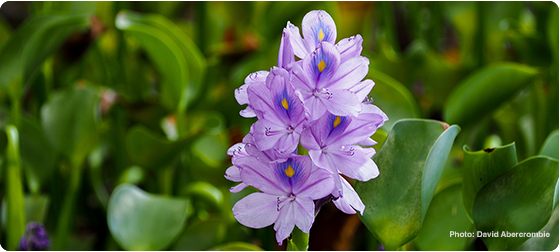Projects
-
Invasive Species

The United States has a goal to reduce the risk of plant and animal introductions into new geographic areas because of the economic, environmental, and social impacts that these species can cause. Species, such as rusty crayfish, zebra mussels, Northern Snakehead, and hydrilla displace native plants and animals, permanently altering native habitats, and negatively affecting biodiversity. The National Sea Grant Law Center works to support this national goal by conducting research and outreach on federal and state invasive species laws and regulations to increase understanding of this complex area of environmental law and facilitate discussions to address inconsistencies and gaps. Highlights of the Law Center’s current invasive species projects are listed below.
Preventing the Spread of Aquatic Invasive Species: A Model National Clean Watercraft Interstate Transport Law
Aquatic invasive species (AIS) are spread in many ways. One of the highest priority pathways identified in the United States is the overland transport of watercraft. In 2024, Creative Resources Strategies, LLC received funding from the U.S. Fish and Wildlife Service to work with the National Sea Grant Law Center to develop model federal legislation to protect the nation’s aquatic resources from the interstate overland transport and spread of aquatic invasive species by watercraft. The “Model National Clean Watercraft Interstate Transport Law” was published in December 2025.
State Clean, Drain, Dry Requirements
During the past 20 years, states and conservation partners have developed extensive Clean, Drain, Dry (CDD) outreach campaigns to minimize the risk of AIS spread from recreational watercraft and associated equipment. Many states also incorporate CDD requirements into state legislation and regulation. As part of a U.S. Fish and Wildlife Service project, the National Sea Grant Law Center conducted a national inventory and comparative analysis of state AIS laws to determine the extent of CDD policy adoption and gaps in the legal framework.
Inventory of State Legal Requirements to Clean, Drain, and Dry Watercraft
In 2022, Creative Resources Strategies, Conservation Collaborations, and the National Sea Grant Law Center received funding from the U.S. Department of Interior to identify the key issues that contribute to the introduction and spread of AIS via commerce and develop an action plan, legal case studies, model regulatory framework, and toolkit to provide guidance and resources to policy-makers, regulators, industry members, and consumers to minimize the spread. To learn more about the project, please visit the project website at www.aisincommerce.org.
Legal Case Studies
-
Reducing the Potential to Spread Aquatic Invasive Species Via the Seaplane Pathway
In 2023, Creative Resources Strategies, Conservation Collaborations, and the National Sea Grant Law Center received funding from the U.S. Fish and Wildlife Service to assess the risk of aquatic invasive species spread by seaplanes and develop best management practices to minimize the identified risks. To learn more about the project, please visit the project website at www.seaplanesandais.com. As part of this project, the Law Center conducted research on the federal and state laws governing seaplanes. We also conducted a regulatory crosswalk of existing state laws with identified best practices to reduce the spread of aquatic invasive species via seaplanes.
Summary of State Seaplane Regulation
Development a Model Legal Package for NAISMA’s Weed Free Products Program
As the North American Invasive Species Management Association’s Weed Free Products (WFP) program expands across the country, legal and policy barriers have emerged that limit implementation. To advance the WFP standards, the National Sea Grant Law Center is collaborating with NAISMA to create a model legal package for state noxious weed programs focused on pathway prevention through certified weed free forage, gravel, mulch, and compost. The three-year project, which launched in January 2023, is supported by funding from the U.S. Fish and Wildlife Service, U.S. Department of Interior. During the first year of the project, the NSGLC conducted an inventory and gap analysis of noxious weed statutes, regulations, and policies nationwide. This research provided the foundation for a national comparative analysis of state legal authority to implement WFP programs. The findings from this analysis will provide the foundation for the development of the model legal package.
NAISMA Weed Free Products Program: Analysis of State Legal Requirements
Appendix A: NAISMA WFP Program Policy Attributes
Great Lakes Detector of Invasive Aquatics in Trade (GLDIATR)
As part of its Great Lakes Detector of Invasive Aquatics in Trade (GLDIATR) project, the Great Lakes Commission (GLC) conducts outreach with individual online sellers selling species that are of concern or restricted in the Great Lakes region. Online sellers need an easy-to-use website or database that clearly lists where popular hobbyist species are legally restricted and therefore cannot be shipped. To address this need, the GLC is developing a nationally focused aquatic invasive species (AIS) restriction database. The National Sea Grant Law Center is collaborating with the GLC to provide legal research support during the development of the database and serve as a long-term host.
Questions About Projects?
Have questions or comments about projects at the National Sea Grant Law Center?
Feel free to contact us!
Work With Us
Interested in working with us?
Download our range of services:










